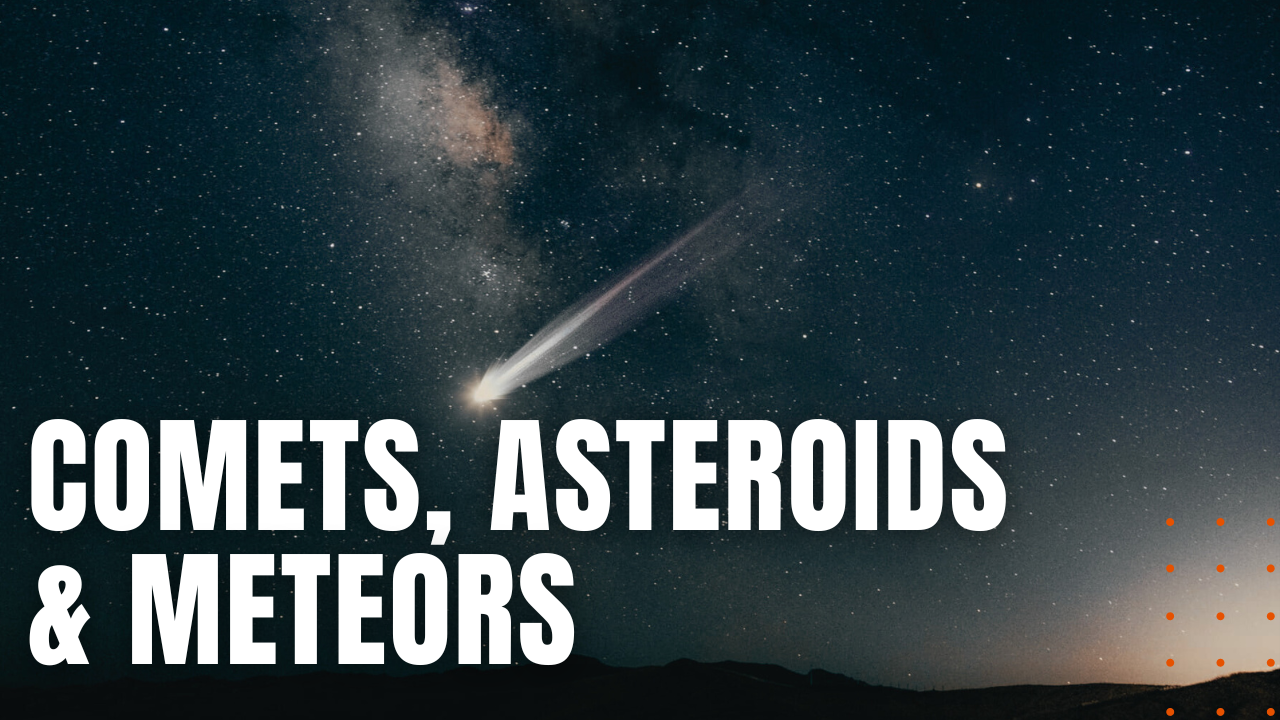Comets, Asteroids & Meteors

Known as celestial bodies that orbit the Sun, comets, asteroids and meteors possess unique characteristics and origins within our solar system, at the same time, offering astronomers a telling glimpse into the building blocks of the known universe. Comets, on the one hand, are icy bodies that originate from the outer reaches of the solar system, primarily from the Kuiper Belt and the Oort Cloud. Composed of water ice, frozen gases, dust and rocky material, as comets approach the Sun, the ever-increasing temperatures cause ice to sublimate, releasing gas and dust to form a glowing coma around its nucleus, often thousands of miles long, such as Halley’s Comet, which is visible from Earth every 75 to 76 years.
Planetoids
Asteroids or planetoids, on the other hand, are rocky bodies that generally reside in the asteroid belt between Mars and Jupiter, lacking any ice components found in comets. Ranging in size from small boulders to diameters measuring into the hundreds of miles, the largest known asteroid is Ceres, which most astronomers classify and a dwarf planet. First discovered by Giuseppe Piazzi in 1801, in 2015, NASA’s Dawn interplanetary explorer visited the asteroid Vesta and the dwarf planet Ceres at their orbits in the asteroid belt, the later comprising a radius of 296 miles, or approximately 1/13th the radius of Earth. Meteors or meteoroids are smaller rocky or metallic fragments of asteroids or comets, which become meteorites if they survive their journey to the Earth’s surface.
Terminal Velocity
Experiencing intense atmospheric friction upon entry, meteors heat up to high temperatures, producing a streak of light known as a shooting star. Traveling at terminal velocity speeds between 220 to 450 miles per hour, meteors stop incandescing thousands of feet above the surface of the Earth, traveling in “dark flight” until the larger ones hit the ground as cold objects comprised of silicate minerals, iron-nickel and stony-iron. In February of 2013, a meteor flew the skies over Chelyabinsk Russia, at a speed relative to Earth estimated at 42,690 mph, delivering an air burst shock wave that blew out windows in some 7,200 buildings in six cities, prompting 1,491 people to seek medical attention for lacerations caused by flying glass, making comets, asteroids and meteors, wayward building blocks from an estimated 4.6 billion years ago.
